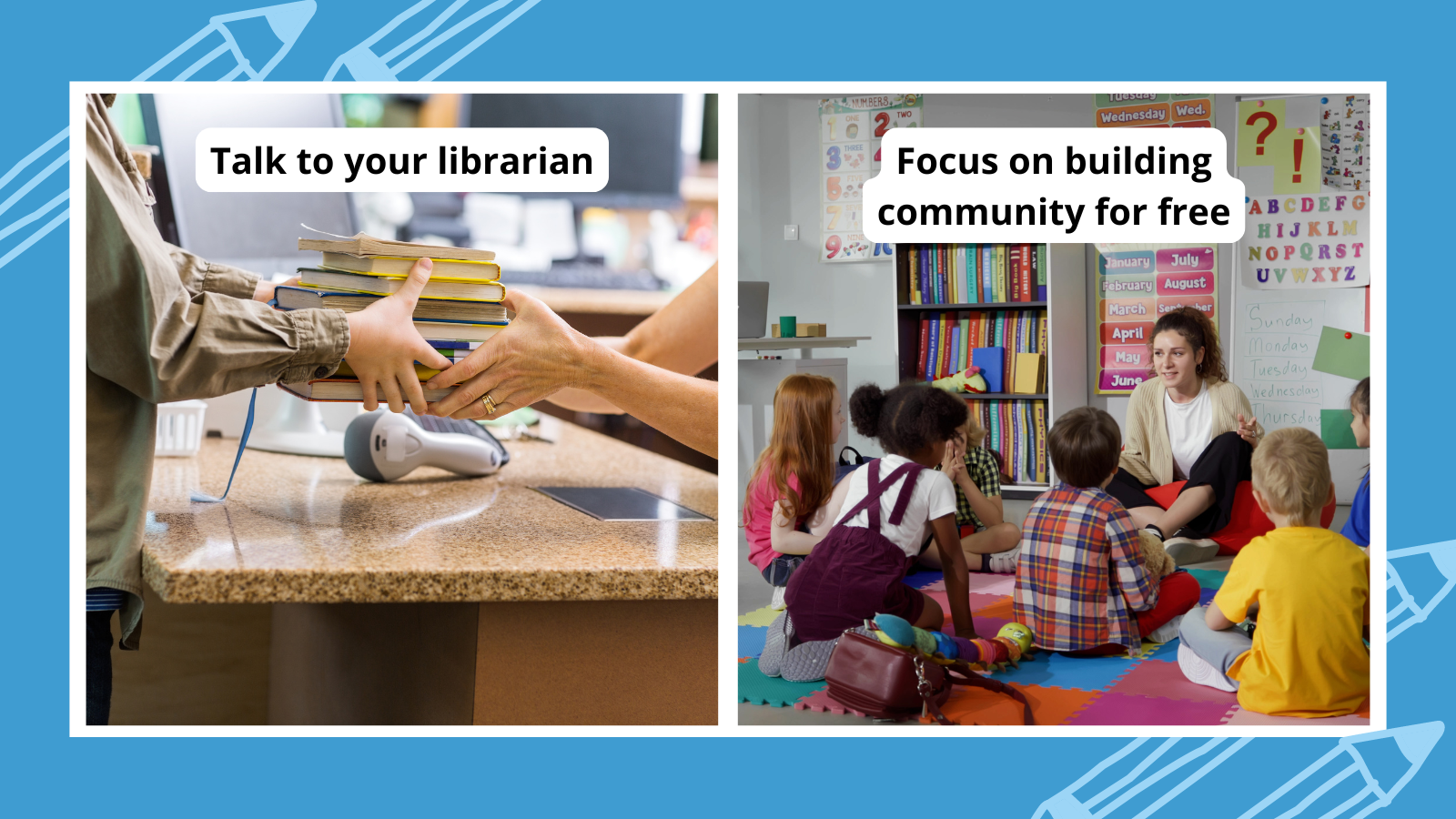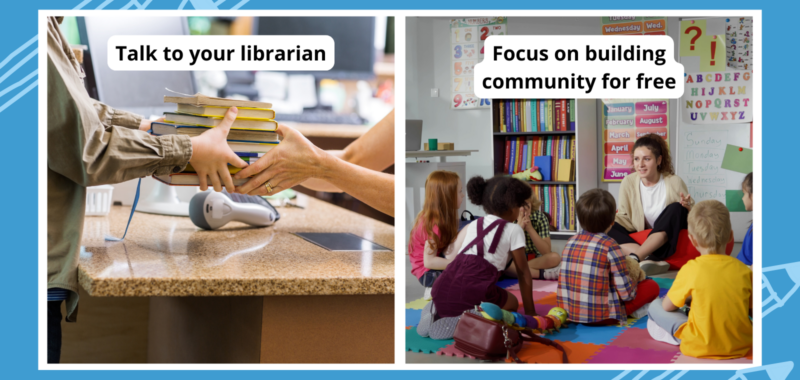
Several years ago, I heard a teacher influencer say that she never spent her own money on her classroom. At first, I honestly didn’t think that was possible, but over the last few years I have learned there are many ways to cut back on school spending. We shouldn’t be asked to carry the burden of funding our classrooms, so here are five ways to leverage your community and stop spending personal money on your classroom.
1. Get to know your librarian.
Instead of buying books for a lesson, check your school’s catalog or send your librarian an email. As a school librarian, one of my favorite roles is supporting classroom teachers. If a teacher wants a book that we don’t have, I can usually purchase it for our collection, so it is always a good idea to ask.
Librarians can support beyond books as well. One year, I used Scholastic Dollars our school had raised from the Book Fair to purchase listening stations and headphones for my kindergarten teachers.
If your school doesn’t have a library or the budget is super small, reach out to your public library. Not only do public libraries have a vast collection of books and other media, they sometimes offer surprising amenities like laser engraving, 3D printing, vinyl cutting, and more. My local library also has a seed library where you can check out a variety of seeds every season.
2. Contact local and chain businesses.
Lots of businesses support school fundraising, and many are eager to help through donations of goods as well. You just have to ask. Since I started calling businesses, I have had a bakery donate cookies for students, a restaurant donate pizza for a class party, and a bagel shop supplied our entire staff with bagels for a teammates baby shower. We’ve even had a local tire store donate food for a school-wide event.
If you have never reached out to a local business before about a donation, check out this article. My best advice is to ask early, be specific about what you need, and show your gratitude through a thank you note and a social media post after the fact.
3. Join a “Buy Nothing” community.
Buy Nothing was started by two friends in 2013 who wanted to reduce waste and curb spending. Now it is a huge online movement with tons of communities and ways to get involved. You can join a group and post needs you have for your classroom. Members are constantly updating with items they want to give away, so check here before you consider purchasing. This is a great place to get storage bins, art supplies, or books for your classroom.
Search for your local Buy Nothing group on Facebook or you can download the Buy Nothing app.
4. Ask legislators to get involved.
We all know that fully funding education makes a difference to students, teachers, and the community, but how often do we talk with elected officials about the realities of being in the classroom? If we have a need, we should let our local legislators know. While we might not change laws with our simple requests, asking for what we need (instead of covering the costs ourselves) makes our situation visible to lawmakers, who ultimately have the power to address education funding.
You can use the form letter below to send an email to your local legislators, and if you aren’t sure who represents you, check out usa.gov/elected-officials/ to find yours.
Dear Representative [Last Name],
My name is [X], and I am a teacher at [X school] in [X city] and a registered voter in your district.
My class is working on a project to master [X state standard]. We need [X supplies needed, include direct links/exact costs]. Would your office be interested in donating to our classroom? This project will serve [X number of students].
I hope you will consider supporting our classroom today and in the future by approving more education funding for our [X state] students. Thank you for your consideration of our project. I look forward to talking with you soon.
Sincerely,
[Your Name]
5. Focus on building community and culture for free.
It can be tempting to purchase items for our classrooms. Matching storage containers and Pinterest-worthy decorations can help us to feel more at ease in our classroom and in control. Treasure boxes, prizes, and treats for students are fun. But they’re not really necessary. All our students really need is a clean, organized classroom where they feel safe to learn. If you’re trying to reduce spending money on your classroom this year, don’t compare your space to another teacher’s. Instead focus on meaningful actions you can take to make your students feel respected and loved. Be at the door everyday when students enter, greet them warmly. Write notes of encouragement. Email parents and caregivers when something positive happens. Teachers shouldn’t have to spend a fortune on their classrooms, and you can be an excellent teacher without spending your paycheck on your students.

